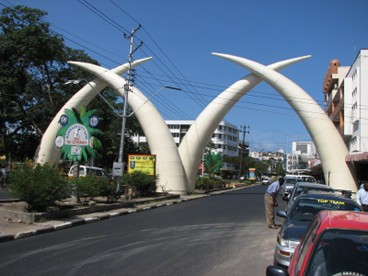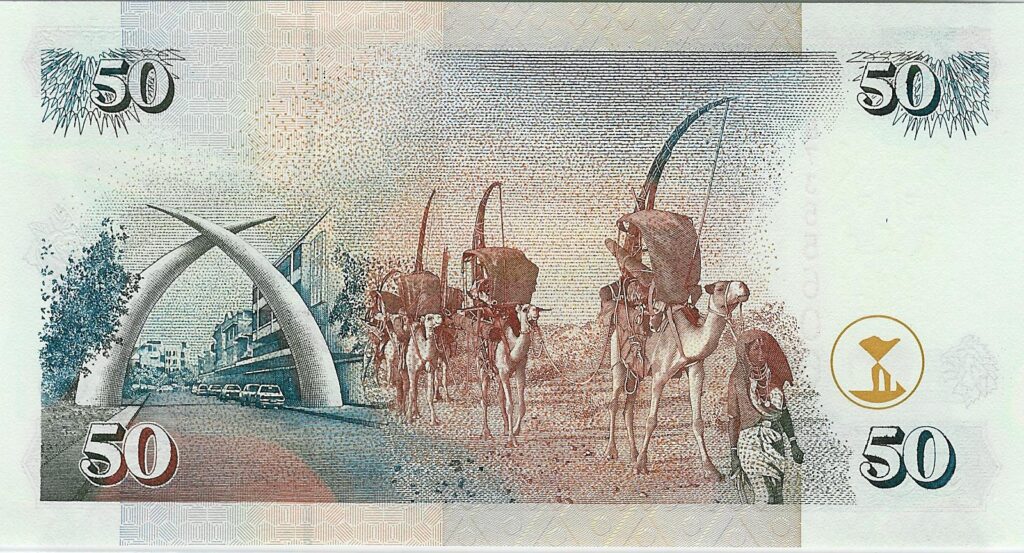Kenya
50 Dollars – 1996
As banknote collectors we see a lot of different images from around the world. Some of those images are a little different than other similar ones and stand out a bit, like the Kenya 50 Dollars issued in 1996. There are three styles, P36 with President Moi and a segmented security thread, P41 with President Kenyatta and P47 with a ‘cornerstone’ watermark.

Kenya 50 Dollars 1996 featuring President Moi on front and on the back are a pair of the giant elephant tusks in Mombassa on Moi Avenue. A caravan of the Rendille people is featured as they migrate to a new living area.

It is the image on the reverse which is the most striking, with large elephant tusks over a roadway and a rather unique looking caravan.
In reality, there are actually two sets of large elephant tusks that each covering two lanes of traffic along Moi Avenue in Mobassa. These giant tusks were erected in 1952 for a visit by Queen Elizabeth II. The original tusks were made of wood, but in 1956 the city decided to keep the tusks as an attraction and they rebuilt them using aluminum. Since then, they have become an iconic symbol of Mombassa.

The other striking image on the reverse is referred to simply as a Dromedary Caravan in the Pick Catalog. The camels however have a distinctive arch, not dissimilar from elephant tusks running from the rear of the camel over its hump. There are no riders, but people are shown walking alongside the camels.


This is actually depicting the relocation of the Rendille people, nomadic pastoralists who live in temporary villages and move two or three times a year on average, tending their sheep, goats and camels. What is shown on the camels in this banknote is actually their homes, which are made of a framework of sticks with sisal mats attached to the sides and roof, while the front door is made of cow skin. The entire home is designed to be portable and strapped onto a camel for transportation. The arch appearance on the banknotes, and in person, are only a coincidental shape to the tusks on Moi Avenue in Mombassa.
The stick structure is made of pre-arched frames which they are tied together with sisal ropes. Traditionally they are usually covered sisal mats, although other materials are commonly used as well. They are evidently sturdy enough to withstand the strong desert winds that commonly blow through the area. Size is limited to the size of the sticks that are gathered, and is rather small, about 3 meters in diameter and about 2 meters high.

Below are two examples of the Rendille Hut Houses built and occupied. Note the animal skins on the sides and the Sisal thatching on the roof area. The photo on the right also shows decoration with cloth attached to the sides.



